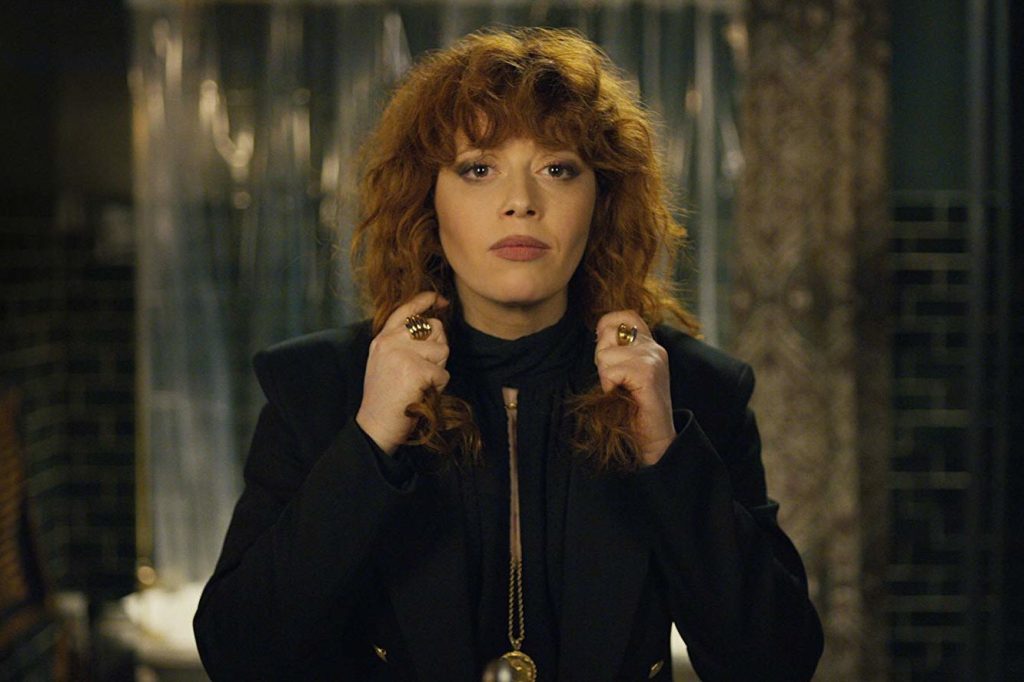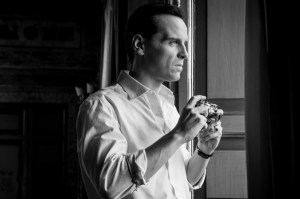Reincarnation is like a drug. Everyone’s dying to try it. About a quarter of American adults believe in it. The ranks of the born again and again include a similar proportion of American Christians. If de Tocqueville were to be reincarnated among us, he would say, ‘I told you so’, take a long draw on his Juul, then make some droll observation about religion in a market economy, and the importance of giving the customers what they want, in this life and the previous. Never mind hell and heresy, the land of the second chance is the land of the third and fourth chance.
Russian Doll is an ironic comedy about reincarnation set in lower Manhattan. Aging cynics will recognize it as the metempsychotic rebirth of Groundhog Day (1993) and After Hours (1985). Natasha Lyonne, star and co-creator of Russian Doll, has summarized it as Groundhog Day meets No Exit, the Sartre play in which three dead characters are stuck together in a room for eternity. This sensation will be familiar to binge-watching apartment-sharers everywhere. So will Sartre’s cracking one-liner, ‘Hell is other people’.
Harold Ramis, the director of Groundhog Day, was a committed Buddhist, though of course cultivating detachment from his commitment. Groundhog Day was made in the Nineties, but it dressed in the full, boxed-shoulder, mullet-ridden Eighties manner, and its philosophy was entirely Sixties and Seventies. ‘Reincarnation’ means ‘re-entering the flesh’. You can see why it took off in the Sixties, the decade in which you never knew what would be floating on the surface of the hot tub.
Nietzsche, tracing the decay of Christianity, identified the next stage of the West’s spiritual history as ‘western Buddhism’, the ‘ultimate nihilism’. Movie buffs can trace this civilization crisis in the development of Bill Murray from comedian to Zen master: from acid-dazed Nam vet in the earlier Ramis movie Caddyshack (1980), and the actor without a theater in Tootsie (1982), to the time-looped weatherman striving to re-enter Andie MacDowell’s flesh in Groundhog Day, and then to triple canonization in Rushmore 1998), The Royal Tenenbaums (1999), and the apogee of gnomic jet-lagged nihilism as West goes East in Lost in Translation (2003).
In Russian Doll, Nadia reaches jet-lagged nihilism in her mid-thirties, like everyone who strives to remain a teenager forever. She dies on the night of her 36th birthday party but is reincarnated, and condemned to relive until she solves the mystery that blocks her development. It is touching that, however great the nihilism, people still believe that the next life will be better than this one. Perhaps the surface compatibilities between progressivism and doctrines of spiritual progress are mutually supportive; perhaps they represent some deeper historical development in the depths where Punxsutawney Phil slumbers.
There are some surface resemblances between Nadia and Phil Connors, the weatherman in Groundhog Day, and the usual reversals that occur in the reincarnation of an entertaining formula. Nadia wears an overcoat, Phil wears a raincoat. Phil predicts the future as a weatherman, Nadia owns the future as a computer coder. Phil affects good cheer while privately detesting his life, Nadia acts nihilistically but is a secret optimist. Groundhog Day was made by men, and Russian Doll was written and produced by women. But this is still America. Love saves the day.
There’s also that recurring American preoccupation with authenticity. A civilization founded on spiritual authenticity, the Protestant obligation to feel it and testify, generates inauthentic feelings and testimonies. The rodent Americana of Punxsutawney Phil is enough to drive anyone mad. In Russian Doll, the millennials party in an ex-yeshiva, and Nadia’s first analysis of her problem is that it derives from non-specific religious guilt. When she tracks down the rabbi, he offers a very Sixties counsel: just go with it.
Instead, Nadia follows it by turning detective. She is chasing her own tale; her mother is dead, her aunt is a psychoanalyst, and her father is absent. This too is very Sixties. While Phil Connors learnt to embrace compassion for all living things, even the provincials of Punxsutawney, Nadia’s path of learning is closer to that of Punxsutawney Phil. Each time she pops her head out of her bunker of drugs, drink and wearisome trendiness, she tucks it back in. Outside is the world of adults, where every day really can feel exactly like the last. The levity of Groundhog Day was adult in that sense, and so was its romantic denouement. There is little levity in Russian Doll, just lots of ‘black humor’.
The story takes three episodes to get going, and the vaunted plot twist in the third episode is that the fourth episode introduces new characters, poorly scripted and poorly acted. Still, the series regains its feet by digging into the childhood that is preventing Nadia from entering her adulthood. But the romantic resolution doesn’t amount to much; the love interest is a suicidal youth named Charlie Barnett, who may or not remember that he shares his name with a long-dead Swing saxophonist. Not for the first time, you have to pity the Millennials.
Groundhog Day was sartorially stuck in the Eighties, with nods to the Fifties, a decade which underwent a revival in the Eighties. At the time — the Eighties, not the Fifties — this revival was attributed to Reaganite morality and the Cold War. Now it looks like the revival of the inexplicably significant James Dean, and the inexplicably forgotten Sam Cooke and Marvin Gaye, all traduced by their posthumous promotion of Levi’s 501s, were signs of early onset dementia in American pop culture. By the time the millennials appeared, the Technicolor dream of youth culture was long washed out by a commercialized repeat cycle. On it spins.
Russian Doll is sartorially stuck in the Eighties, with nods to the Seventies from its Godfather titles onwards. ‘Jodorowsky’s Dune’ is the password to a drug laboratory. There are sick retro jokes about Jonestown, and cute retro ones about Columbo and Peter Falk’s mac, in case the target audience doesn’t know why Lyonne is cracking wise while shuffling around in a coat with a cigarette in the corner of her mouth. When Nadia is reincarnated, Harry Nilsson’s 1971 song ‘Gotta Get Up’ recurs on the soundtrack. Nadia’s mother, who we meet in a flashback to Nadia’s childhood, is played Chloe Sevigny, who pioneered the Eighties throwback in the Nineties. Here, Sevigny looks very Seventies, even though the flashback takes place in the early Nineties.
This is confusing to anyone who can remember any or all of these decades from the first time around. but it may seem reasonable if you dwell in the eternal digital present. If you are a millennial for whom the past is endlessly reincarnated as a context-deprived slurry of irony, the moral must seem clear. Since the Sixties, time has been annulled, perhaps because young people no longer have anything better to do. Groundhog Day, that summation of Californian Buddhism, is a hundred-minute movie, but Nadia’s search for the Old World linear timeline of a psychoanalytic biography runs to eight episodes and more than two hundred made-for-binging minutes. Everything goes around, and happiness is a pleasant feeling of déjà vu all over again. The second season threatens to descend upon us with the false cheer of the irritating insurance salesman in Groundhog Day.
Nietzsche identified a longing for the void as part of the Western sickness. Lyonne says she has drawn on a bout of heroin addiction for Nadia’s character and Russian Doll’s disordered sense of time. Nadia’s boyfriend calls her ‘the abyss’. What would Punxsutawney Phil say, were he to emerge from the wormhole of time with a Netflix subscription?
Dominic Green is Life & Arts Editor of Spectator USA.


















